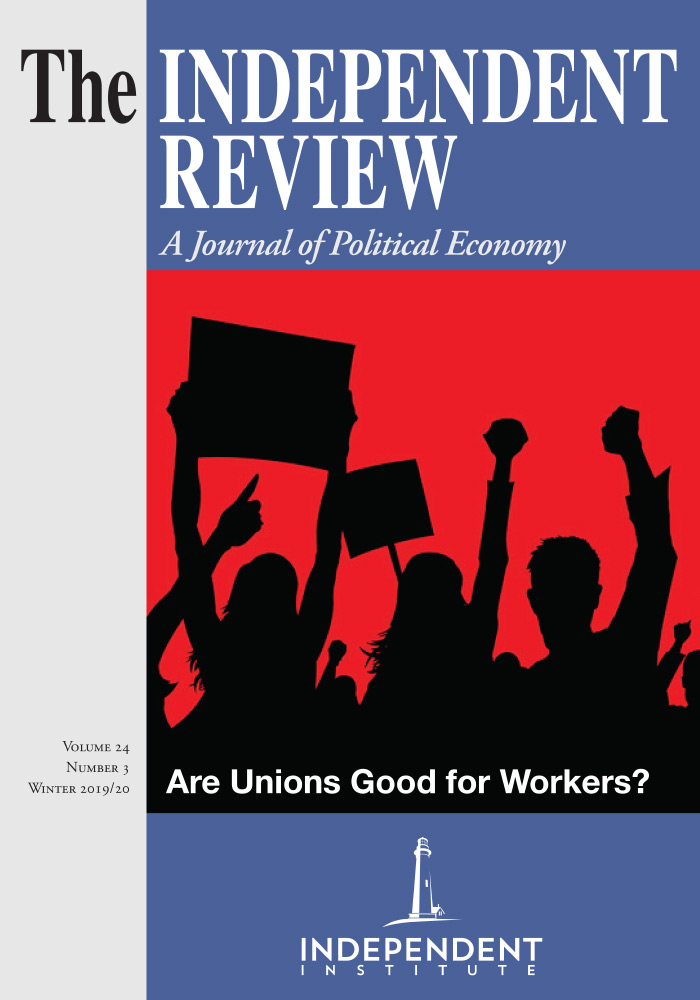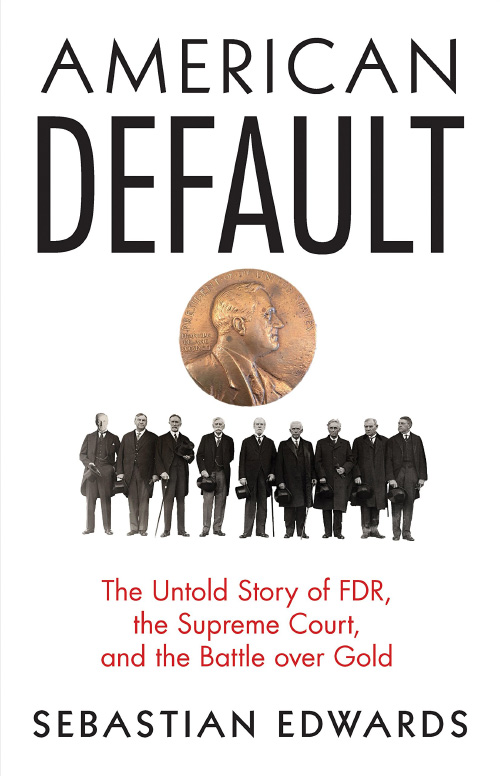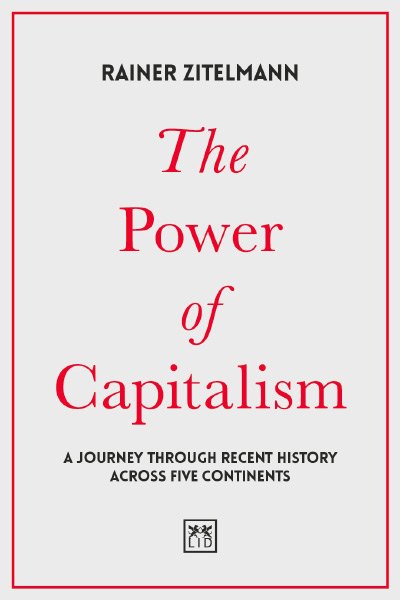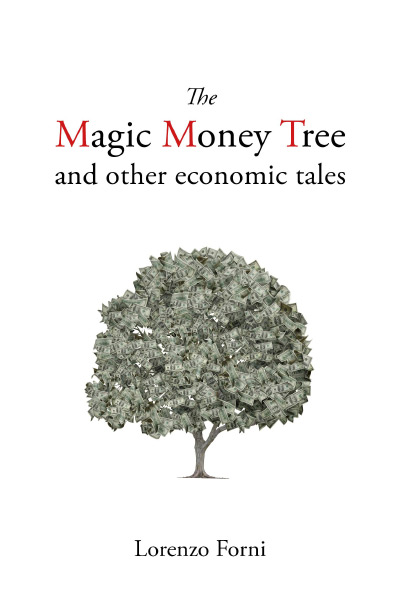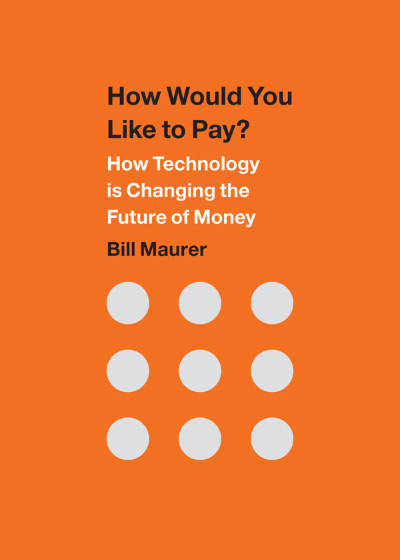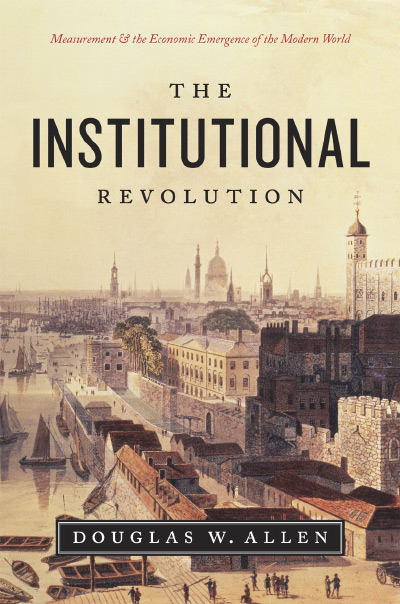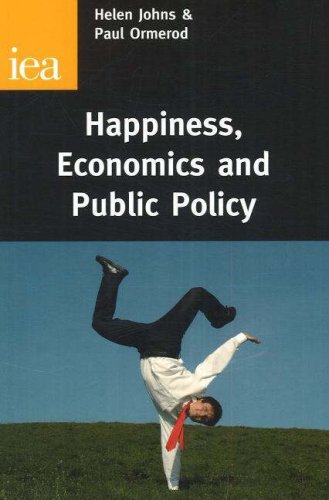Rarely does one read a book on a topic already researched thoroughly and still feel as if one has walked away with a new perspective. More often, authors rehash old arguments, perhaps with a revelation or two that the reader finally earns after a laborious trudge through hundreds of pages whose arguments feign novelty. Sebastian Edwards’s new publication, American Default: The Untold Story of FDR, the Supreme Court, and the Battle over Gold, is not the latter kind of book. This review recapitulates the essence of Edwards’s story and highlights his unique contribution.
Edwards opens with an observation: the exit from the gold standard and the abrogation of gold clauses in contracts are practically a forgotten episode, and to the extent it is remembered, recollection of it “has been simplified and sanitized” (p. xvii). My own understanding of it did not successfully avoid this critique. Franklin Roosevelt and Congress successfully challenged gold clauses, which were contractual agreements to pay in terms of gold parity, making them nonbinding as the Supreme Court idly sat by. Right? This is not at all the story told by Edwards. The Supreme Court’s de facto approval of the abrogation of the gold contracts by the Roosevelt administration appears to have been a retreat as the Supreme Court prepared for “an open war” with the administration (p. 191). Edwards shows that there was no shortage of intrigue in the development of the policies that led to this event, whether inside or outside the administration.
The road to “an open war” begins with Roosevelt’s establishment of his “brain trust,” the cohort of professors and professionals from whom the president sought counsel. They included Raymond Moley, a law professor from Columbia University who became FDR’s speechwriter and adviser; Rexford Tugwell, an economics professor at Columbia who thought the economy was susceptible to “traps of ‘overproduction’”; and Adolf Berle, who was professor of law at Columbia. These three made up the inner circle. The trust also included Robert K. Strauss of Harvard’s Business School; General Hugh Johnson; and a handful of others. None of these men was a monetary economist. As Rex Tugwell reflected, “We were not monetary theorists, and we said so repeatedly” (qtd. on p. 7). Yet the brain trust’s strategizing would affect a radical transformation of the monetary system.
Following his introduction of Roosevelt and his presidency, Edwards meticulously details how FDR successfully domineered political developments at home and abroad. FDR is presented, in his own words, as “an experimenter” (qtd. on p. 14). Leading into the presidency, he refused to cooperate with Herbert Hoover and to commit to any plan. Both strategies played into keeping the president’s options open. In fact, the president appears to have had no plan upon entering office at the height of crisis on March 4, 1933. This did not stop him from experimenting. Within days, he announced a banking holiday justified by the Trading with the Enemy Act of 1917. Congress immediately followed up with the Emergency Banking Act, which approved the creation of Federal Reserve notes not backed by gold and which amended the Trading with the Enemy Act to allow for the president “to decree a gold embargo, of any length” (p. 39), and, ultimately, to confiscate gold. In his first week in office, Roosevelt scored a major legislative victory and established that his presidency would be defined by swift action, often backed by the legislative branch. Congress was marching in step with the president. The only force capable of stopping him was the Supreme Court.
Throughout the period, no one seemed to understand the magnitude of change that these policies would ultimately bring about. The actual economic effects of these interventions tended to be negative, but there was confusion at the time concerning those effects. (On this confusion, see, for example, Benjamin M. Anderson, Economics and the Public Welfare: A Financial and Economic History of the United States, 1914–1946 [1949; reprint, Indianapolis, Ind.: Liberty Fund, 1979], 257), and Scott Sumner, The Midas Paradox: Financial Markets, Government Policy Shocks, and the Great Depression [Oakland, Calif.: Independent Institute, 2015], 201–30). As they increased their activity, the president and Congress tested the limits of their power, intervening in a manner never before seen in U.S. history. The abrogation of the gold clause was only the first of many interventions attempted by the Roosevelt administration with the approval of Congress. Other efforts include the implementation of the NRA (National Recovery Administration), NIRA (National Industrial Recovery Act of 1933), and AAA (Agricultural Adjustment Act of 1933), among other three- and fourletter programs and agencies that typify the New Deal.
American Default concentrates on dollar devaluation and the abrogation of agreements to repay contracts in terms of gold, as required by the gold clause. The work is unique in that it reads almost like a novel. Unlike other books that seek to evidence a particular interpretation of the Great Depression, Edwards’s book first tells the story of what happened regarding the end of the gold standard and the legal status of contracts promising payment in gold. What were the major events and debates? What were the conversations and attitudes of those involved? Although the author is concerned with the economic effects of the change in the status of gold, he does not build his story around a particular interpretation of the abrogation being good or bad, a political catastrophe or economic salvation. The Supreme Court ultimately approved of the abrogation of the gold clause for private contracts but declared the action unconstitutional in the case of public debt. Despite this declaration, the Supreme Court did not rule that the government must repay the plaintiff.
Maintaining the gold clause would have been especially expensive: costing $69 billion in the value of all dollar-denominated debt, a reduction in Treasury balances by $2.5 billion, and an increase in government debt payments by $9 billion (pp. 150, 168). To prevent this expense, President Roosevelt was prepared to continue his fight with the Supreme Court using all means possible. Edwards describes a speech that FDR planned to give had the gold clause been enforced. The author notes that “with a high degree of probability, [it] would have generated a deep constitutional crisis” (p. 167). The speech closes: “To stand idly by and to permit the decision of the Supreme Court to be carried through to its logical, inescapable conclusion would so imperil the economic and political security of this nation that the legislative and executive officers of theGovernment must look beyond the narrow letter of contractual obligations” (qtd. on p. 168).
The president believed that only the value of contracts should be repaid, not including the extra burden generated by deflation, and he was willing to continue acting even in open defiance of the Supreme Court.
The members of the Supreme Court, not letting the perfect be the enemy of the good, made a symbolic statement concerning the constitutionality of abrogation, voting against it eight to one. However, the Court voted five to four against requiring compensation for damages that would require that contracts be repaid in terms of gold according to a contract’s gold clause. According to Edwards, this was tactical retreat. Together, FDR and the legislature pushed the limits of their power. In each conflict, the Supreme Court faced different payoffs depending on its decision and the strategy taken by the opposing party, FDR, after the decision. If that strategy degraded institutions of governance, then the payoff for the Supreme Court was poor relative to the payoff for acquiescing to a decision but maintaining the ability to fight FDR’s expansion of power. So long as the Court maintained the ability to battle this expansion, perhaps more fiercely than they would have otherwise, the integrity of the rule of law was largely maintained, even if there was an exercise of power that was not legally merited.
In closing, Edwards observes that, despite the drama surrounding the abrogation of the gold clause, the issue “was resolved according to the rule of law, following procedures set up by the Constitution, and according to precedent” (p. 206). Maintaining the rule of law was no simple task. Robert Higgs rightly emphasizes the lack of respect for property rights held by those whose opinions supported the abrogation (Crisis and Leviathan: Critical Episodes in the Growth of American Government [New York: Oxford University Press, 1987], p. 187). Disagree with the Court justices’ apologetics as one may, the alternative to their support might have been the destruction of the Supreme Court by a belligerent president who held a “low opinion of legal technicalities” (p. 187).
Edwards also notes, in agreement with Scott Sumner, that the devaluation, or in this case maintenance of devaluation, promoted macroeconomic stability. Following his argument that the rule of law was maintained, he frames the default as “an excusable default” (p. 196), meaning that investors expected that the situation merited the response and that it would not happen again. Economists like myself are left with an uncomfortable and perhaps unavoidable conclusion: FDR’s devaluation supported economic recovery, even if one believes that he never should have had the power to implement it. Good economic and political history necessarily includes such subtlety. Regardless of their political and philosophical priors, scholars, intellectuals, and students of history will benefit from reading this book.
| Other Independent Review articles by James L. Caton | ||
| Summer 2023 | A Monetary and Fiscal History of the United States, 1961–2021 | |
| Spring 2023 | Crisis and Credit Allocation: The Effect of Ideology on Monetary Policy during the Great Depression and the Great Recession | |
| Winter 2022/23 | The Currency of Politics: The Political Theory of Money from Aristotle to Keynes | |
| [View All (4)] | ||

